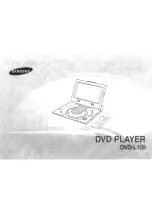
Page 6
For technical questions, please call 1-888-866-5797.
ITEM 59134
SAFETY
SETU
p
Op
ERA
TION
M
AINTENANCE
Service precautions
1.
Before service, maintenance, or cleaning:
a.
Unplug all devices from the Generator.
b.
Turn the engine switch to its “OFF” position.
c.
Allow the engine to completely cool.
d.
Then, remove the spark plug
cap from the spark plug.
2. Keep all safety guards in place and in
proper working order. Safety guards include
muffler, air cleaner, mechanical guards,
and heat shields, among other guards.
3. Make sure the Engine Switch is in its “OFF”
position before moving the Generator and
before performing any service, maintenance,
or cleaning procedures on the unit.
4. Keep all electrical equipment clean and dry.
Replace any wiring where the insulation is
cracked, cut, abraded, or otherwise degraded.
Replace terminals that are worn, discolored, or
corroded. Keep terminals clean and tight.
5.
Do not alter or adjust any part of the
equipment or its engine that is sealed by the
manufacturer or distributor. Only a qualified
service technician may adjust parts that may
increase or decrease governed engine speed.
6. Wear ANSI-approved safety goggles,
heavy-duty work gloves, and dust
mask/respirator during service.
7. Maintain labels and nameplates on
the equipment. These carry important
information. If unreadable or missing, contact
Harbor Freight Tools for a replacement.
8. Have the equipment serviced by a qualified repair
person using only identical replacement parts.
This will ensure that the safety of the equipment
is maintained. Do not attempt any service or
maintenance procedures not explained in this
manual or any procedures that you are uncertain
about your ability to perform safely or correctly.
9. Store equipment out of the reach of children.
10. Follow scheduled engine and
equipment maintenance.
GFCI protection:
This Generator is equipped with two 3-Prong,
duplex 120 V ground fault circuit interrupter
(GFCI) receptacles. These outlets provide
additional protection from the risk of electric
shock. Should replacement of the receptacles
become necessary, use only identical replacement
parts that include GFCI protection.
Refueling:
1. Do not refill the fuel tank while the
engine is running or hot.
2. Do not smoke, or allow sparks, flames,
or other sources of ignition around the
equipment, especially when refuelling.
3.
TO pREVENT FUEL LEAKAGE AND FIRE
HAZARD, Do not overfill with fuel. Fill with
fuel according to the Fuel Level information
below the Specification chart for your model.
4. Do not fill fuel tank to the top. Leave a little
room for the fuel to expand as needed.
5. Refuel in a well-ventilated area only.
6. Wipe up any spilled fuel and allow excess
to evaporate before starting engine.
To prevent FIRE, do not start the engine
while the smell of fuel hangs in the air.
Battery Service:
1. Servicing of batteries are to be performed or
supervised by personnel knowledgeable of
batteries and the required precautions. Keep
unauthorized personnel away from batteries.
2. When replacing batteries, use the following type
batteries: 12 V, 14 Ah sealed, lead-acid type.
3. CAUTION – Do not dispose of battery or batteries
in a fire. The battery is capable of exploding.
4. CAUTION – Do not open or mutilate the battery.
Released electrolyte has been known to be
harmful to the skin and eyes and to be toxic.
5. CAUTION – A battery presents a risk of high
short circuit current. The following precautions
are to be observed when working on batteries:
a. Remove watches, rings, or other metal objects.
b. Use tools with insulated handles.
c. Do not lay tools or metal parts on top of batteries.
SAVE THESE INSTRUCTIONS.







































